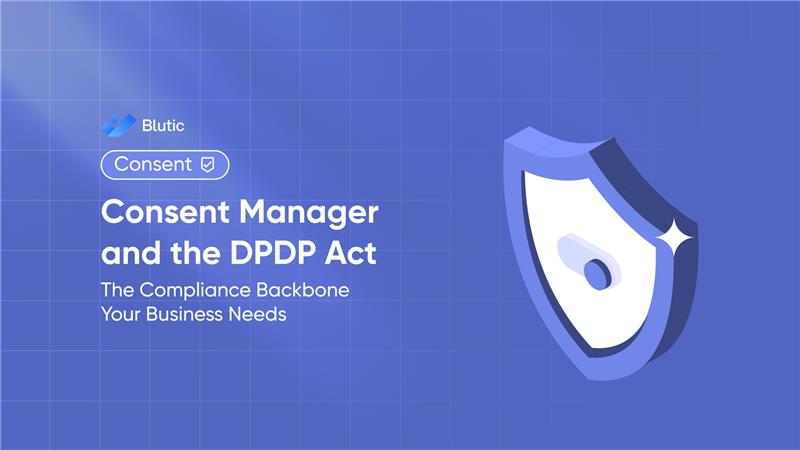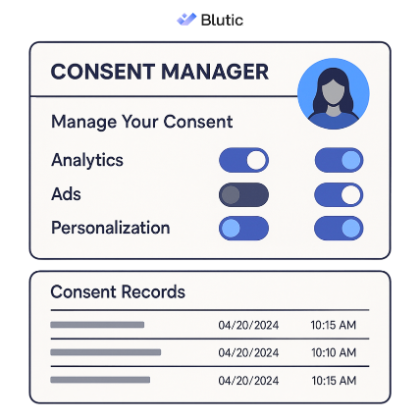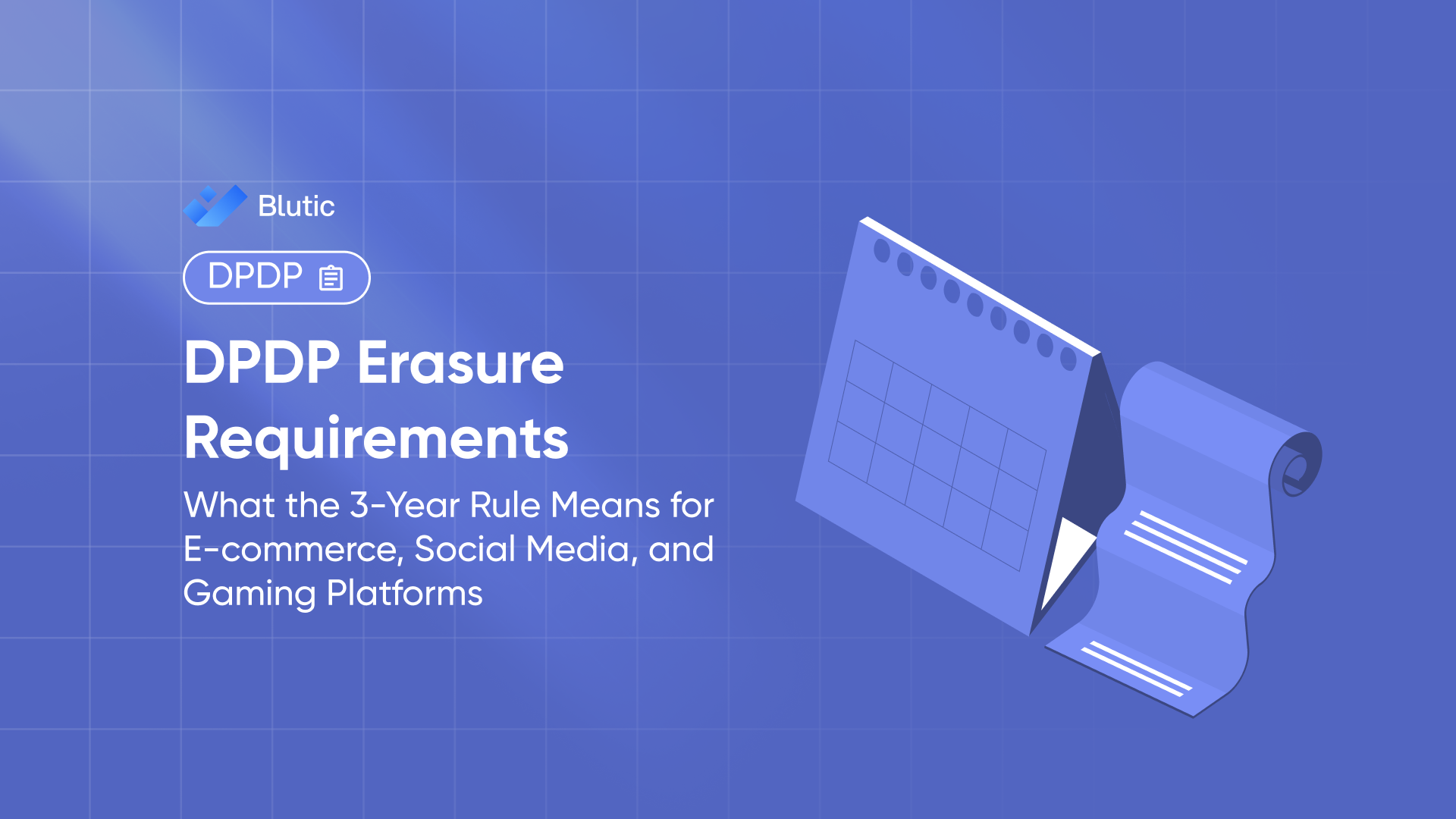Consent Manager and the DPDP Act: The Compliance Backbone Your Business Needs

Consent Manager and the DPDP Act: The Compliance Backbone Your Business Needs
Introduction
India’s Digital Personal Data Protection Act (DPDPA) has introduced a new standard of accountability for businesses collecting personal data. At the center of this compliance shift stands a crucial role: the Consent Manager.
For companies aiming to be DPDP-ready in 2025 and beyond, having a reliable consent management system isn’t just a best practice, it’s a legal and operational necessity.
What Is a Consent Manager?
A Consent Manager is a platform or interface that enables individuals (called Data Principals under the Act) to manage their data sharing preferences across services, platforms, and use cases with transparency and control.
Under the DPDPA framework, Consent Managers are envisioned as registered entities authorized to facilitate the flow, withdrawal, and tracking of consents between users and data fiduciaries (business). But for practical implementation, businesses can also adopt Consent Management Platforms (CMPs) like Blutic that perform these functions efficiently and automatically.
Why Consent Managers Are Critical Under DPDPA
Here’s what makes them the backbone of DPDP compliance:
- Enables Lawful Data Processing
You cannot legally collect or process user data under the DPDP Act without informed, unambiguous, and purpose-specific consent.
- Supports Withdrawal and Updates
Users can withdraw or change their consent at any time. A Consent Manager makes this frictionless and traceable.
- Creates Consent Logs and Audit Trails
The Act requires companies to maintain proof of consent including timestamps, cookie types, and lawful grounds. Manual systems fall short.
- Facilitates Trust
Consent Managers enhance user experience by giving individuals a clear understanding of what’s collected, why, and how it’s used.
Key Features a DPDPA-Compliant Consent Manager Must Have
- Granular Consent Options
Users should be able to allow or deny data use for specific purposes (analytics, advertising, personalization, etc.).
- Easy Consent Withdrawal
The system must allow consent to be revoked with ease across web, app, or email.
- Consent Records and Exportable Logs
Businesses must store a complete consent history to defend against complaints or audits.
- Geo-Targeted and Language-Specific Banners
Multi-language support and region-aware banners ensure accessibility and regulatory alignment.
- Integration with Websites and Marketing Tools
Integration with Google Tag Manager, Shopify, WordPress, CRMs, and analytics is essential for real-time enforcement.
- Auto-Blocking of Non-Compliant Cookies
No cookies should be fired unless user consent has been recorded especially for marketing or third-party trackers.
Introducing Blutic: The Smart Consent Manager for India’s DPDPA
Blutic is a full-stack consent management platform that helps businesses become and stay DPDP-compliant. It handles the entire consent lifecycle from banner display to consent withdrawal and audit readiness.
With Blutic, you can:
- Design and deploy branded, multi-language cookie banners
- Automatically block or allow trackers based on real-time preferences
- Maintain detailed consent logs with export features
- Allow users to adjust preferences via a clean, user-friendly dashboard
- Support multiple websites or apps with one centralized platform
- Access analytics that help you optimize consent rates
Blutic also aligns with future-ready compliance requirements meaning it’s scalable as India’s privacy regulations evolve.

Real-World Applications
Retail and E-Commerce: Display cookie banners that separate essential and non-essential cookies, with user-friendly opt-ins.
Fintech and NBFCs: Record lawful consents tied to onboarding flows, credit checks, or personalization and track them for audits.
Healthcare and EdTech: Handle highly sensitive data with explicit consent rules, age verification, and preference management.
SaaS and Publishers: Comply with India’s consent laws without disrupting UX or affecting conversion rates.
In the age of digital accountability, your business can’t afford to treat consent as a checkbox. The DPDP Act is clear consent must be informed, granular, revocable, and provable. And that’s only possible with a robust Consent Manager at the heart of your tech stack.
With Blutic, Indian businesses get a compliant, scalable, and user-friendly solution to make privacy a promise not a liability.
Frequently Asked Questions
Yes. While the Act talks about registered consent managers, businesses must have a functional equivalent to collect and track consents lawfully.
Failure to maintain consent logs may lead to fines under the DPDPA, especially if challenged by a user or during a regulatory audit.
Absolutely. Blutic is built to scale, offering affordable plans and easy integrations for both SMBs and enterprises.
More Blogs
Get the indise scoop: the latest tips, tricks, & product updates
%20.png)




